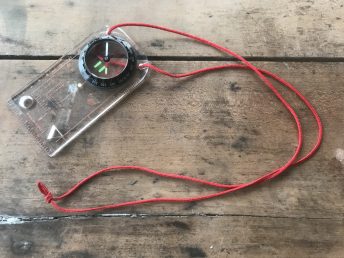Using a compass for taking bearings is an essential part of many outdoor activities. Here is a simple guide.
Compasses
For taking bearings, your compass must have a rotating bezel around the dial itself. Compasses I would recommend include the Silva Expedition 4 (£25) or the Silva Ranger (£20ish). Good compasses are fairly expensive. Don’t be tempted by cheap knockoffs because you will regret it later. A bad compass could cost a life.
Bearings come in two types: map-to-ground and ground-to-map. Map-to-ground are used when you know where you are on a map and where you are going, but not which direction to walk, and ground-to-map are used for identifying landmarks or pinpointing exactly where you are.
1. Map-to-Ground
The below example uses the Pennine Way in the Peak District. The UK is in lockdown as I write, so I can’t go there to take proper photos.
Say we are at Mill Hill, and want to go to Moss Castle, but we cannot see the path (it’s foggy or covered in snow, or we just want to check to make sure).
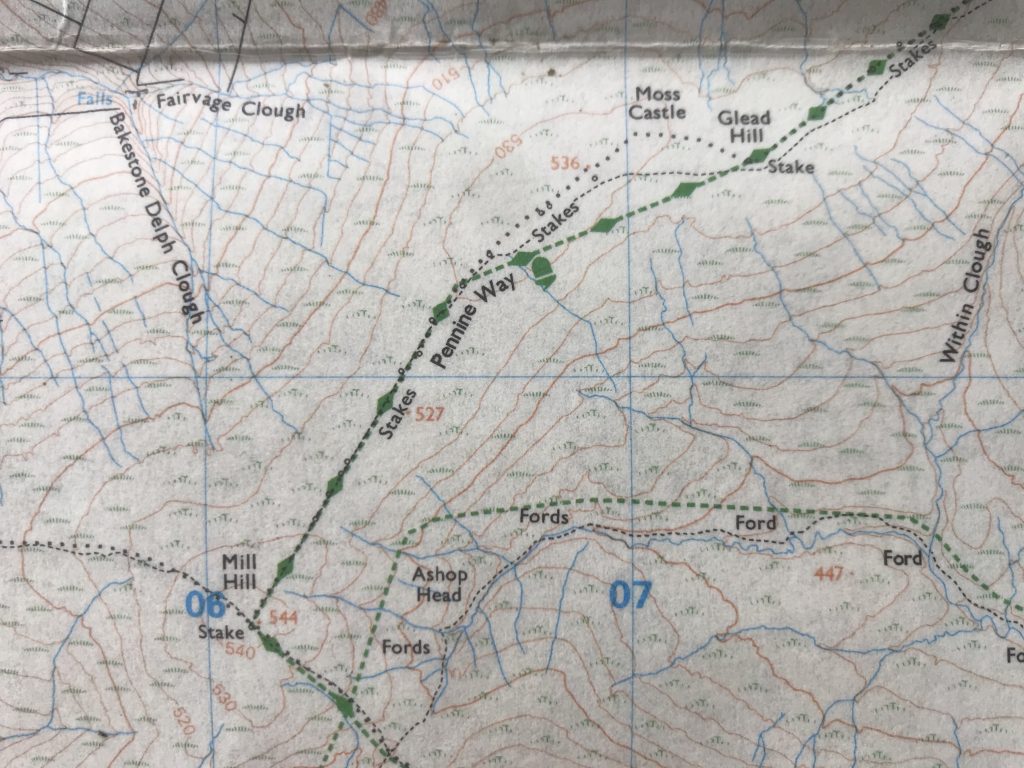
We can see here that it it roughly north east, but this isn’t good enough, so there are a few simple steps to taking a bearing.
1. Baseplate
Align the baseplate (clear plastic ‘foot’) with the path you want to walk along.
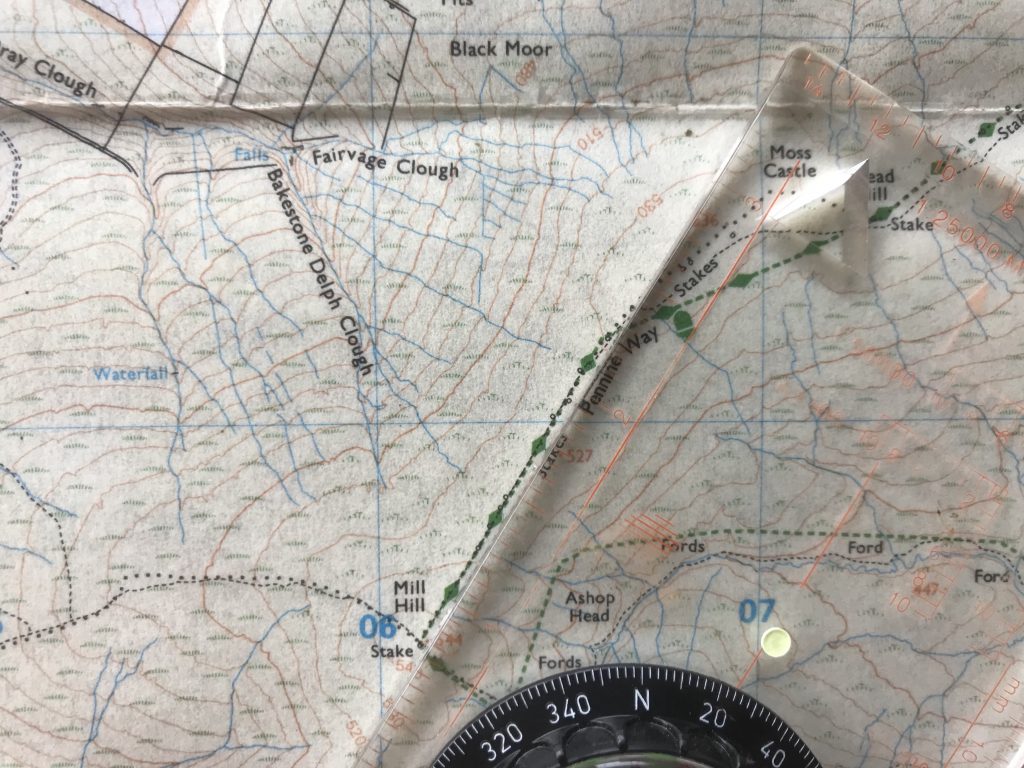
2. Bezel
Keeping the baseplate fixed, rotate the bezel until the small lines in the background align with the north-south (top to bottom) grid lines on the map.
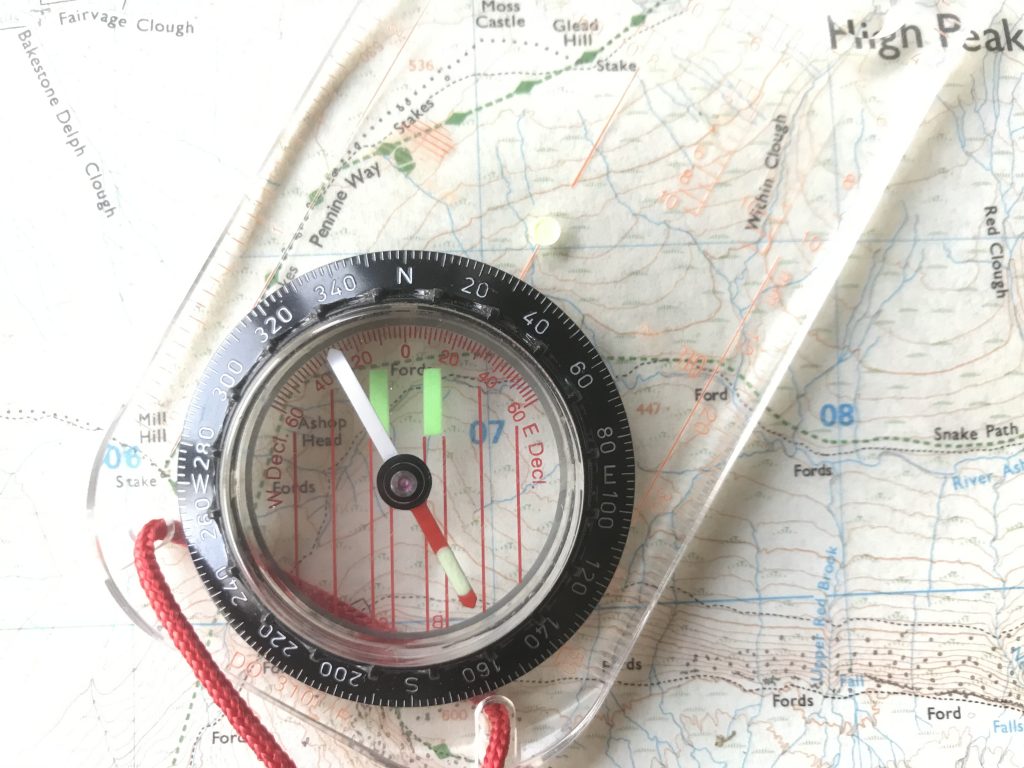
3. Read
You can now move the compass off the map, and read the bearing off: a number on the bezel will line up with the north-arrow on the baseplate – this is the bearing you must follow. In this case, it shows 30 (not 25).
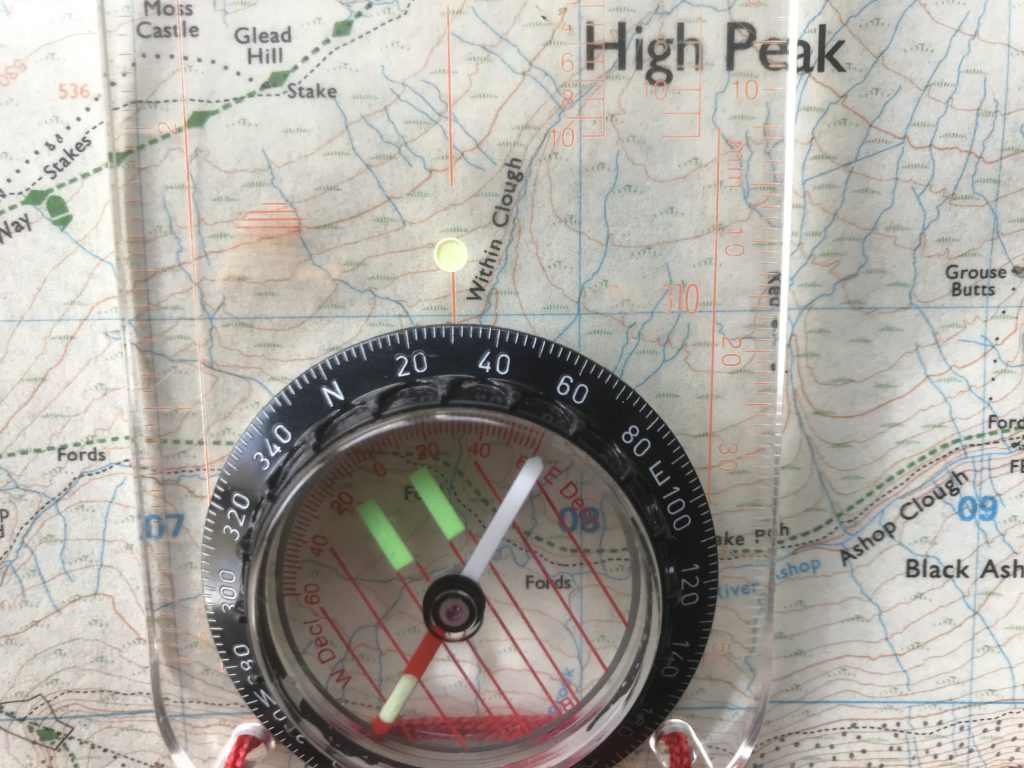
4. Follow
Once you have your bearing, align the red north arrow with the N marking on the bezel. The north arrow on the baseplate will now point where you need to go:
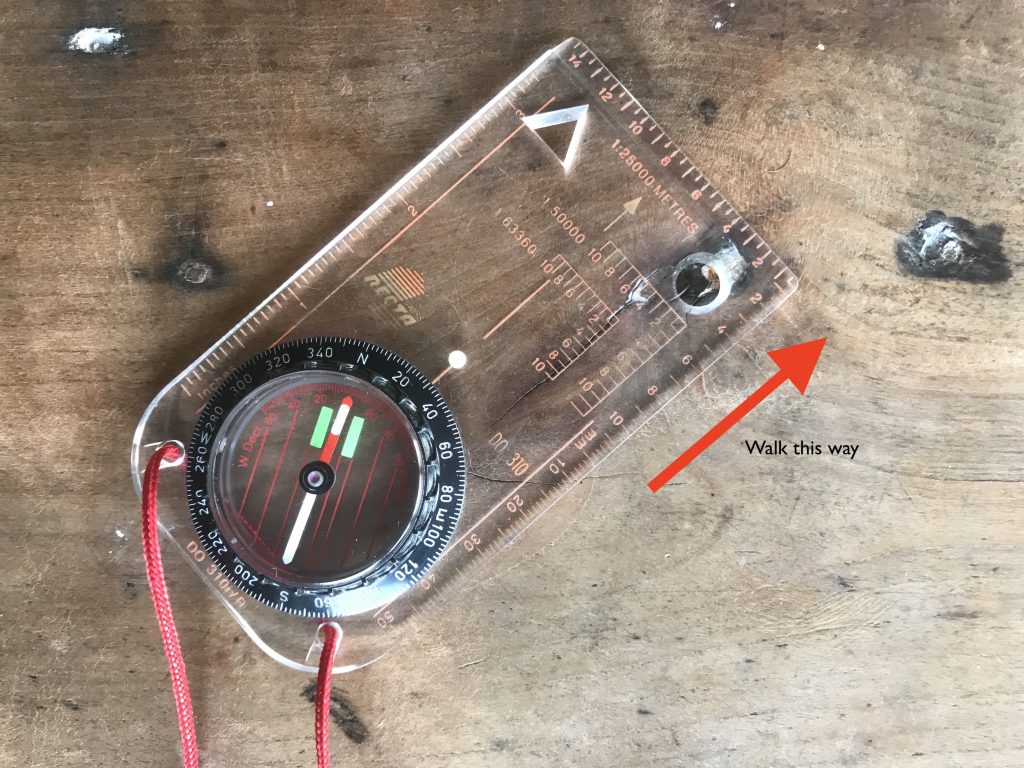
2. Ground-to-Map
As I mentioned, the UK is in lockdown, so I can’t demonstrate this outside. The principles still apply inside, though.
There are, again, four steps:
1. Point
Point the arrow on the baseplate at an object in the real world.
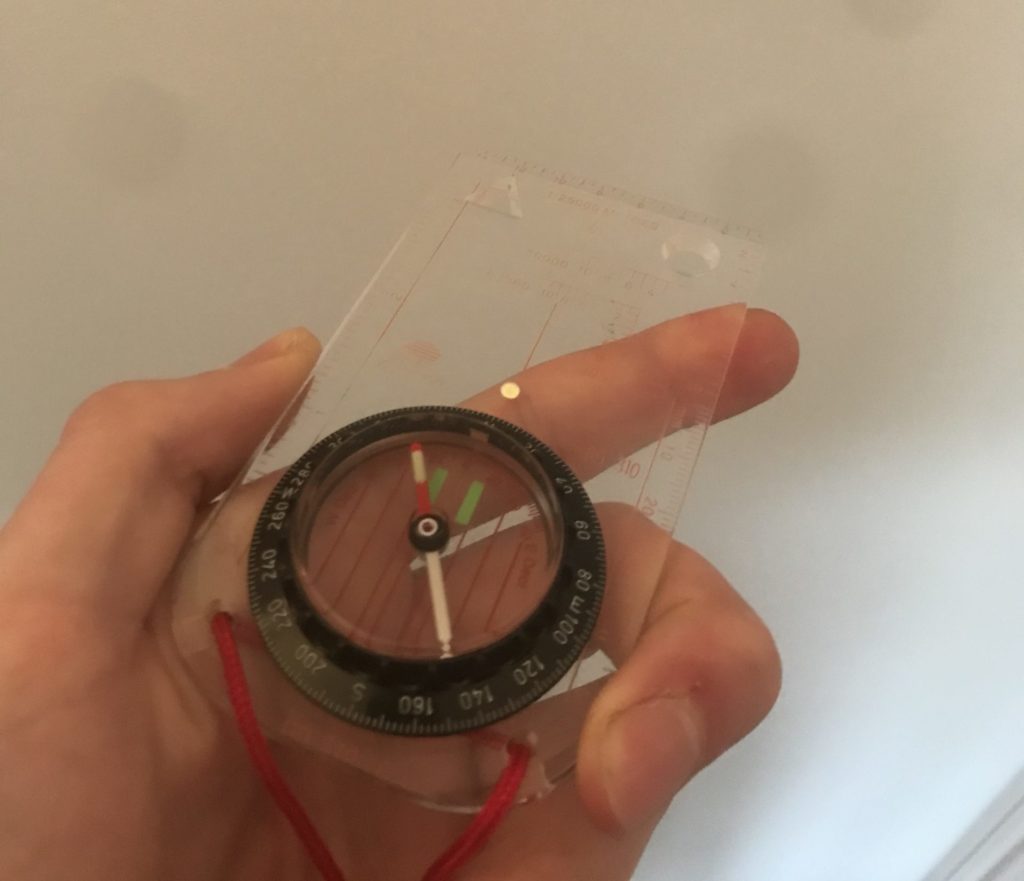
2. Bezel
Rotate the bezel until the north arrow of the compass aligns with the N marking on the bezel
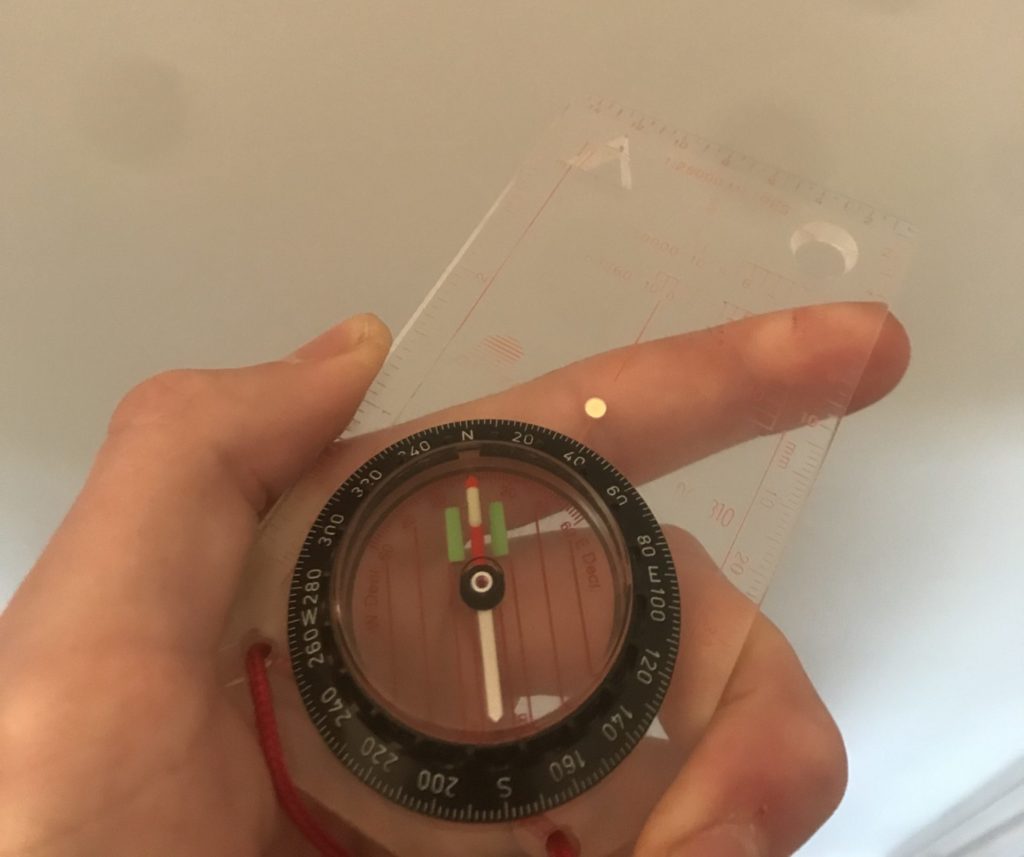
3. Read
You can read the bearing off the dial exactly as before (here it is ~37).

4. Map
Lie the edge of the baseplate on the map so that it passes your current location (I’ve used Waun Fach in the Brecon Beacons) and rotate the compass until the small lines in the background align with the north-south (top to bottom) grid lines on the map. The edge of the baseplate now passes through the object you were looking at in real life, but on the map: here the disused quarry (because of lockdown, I’ve simulated this).
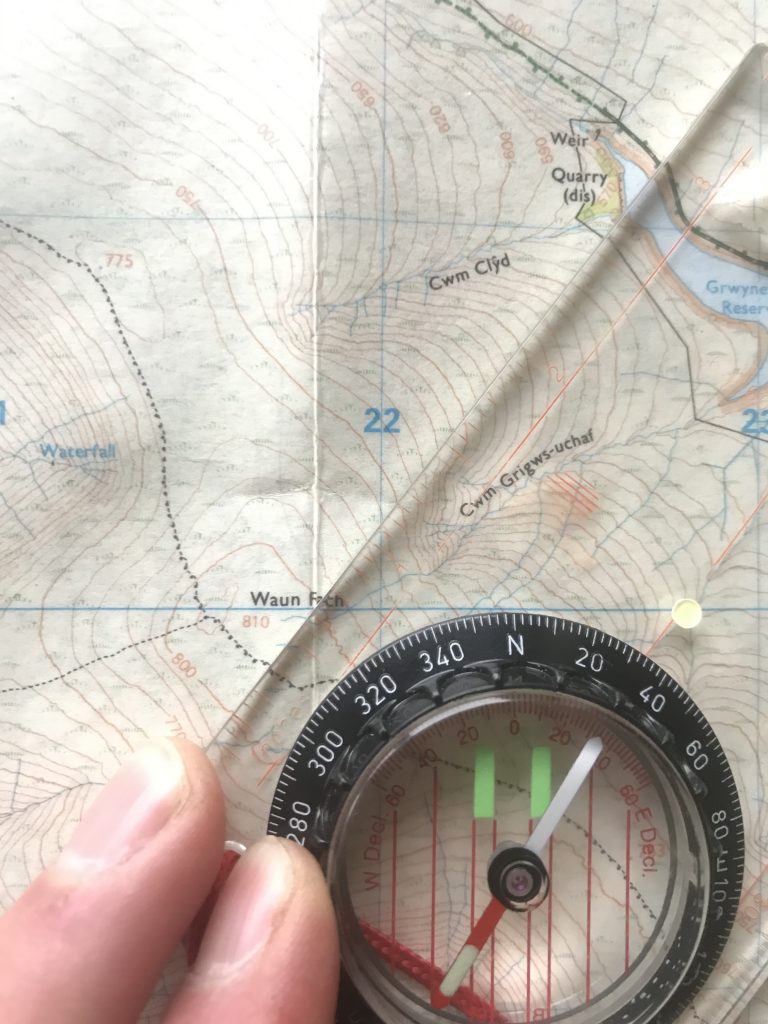
Conclusions
This has been a very basic guide to taking bearings with a compass. It can be a lifesaving skill – whether you plan to rely on a GPS or not, your map will never run out of battery, so you need to know how to use it. I suggest you practice these skills thoroughly before ‘putting yourself to the test.’ Its a good idea to do this somewhere you won’t get lost – your local park or nearby fields, otherwise you’ll be concentrating on the route, not the compass.
If you’d like more information on how to use these beatings to navigate, check out our guide on navigation with a map and compass here.

